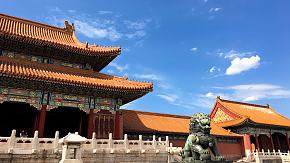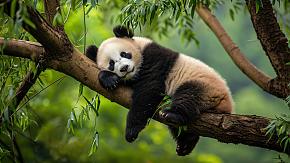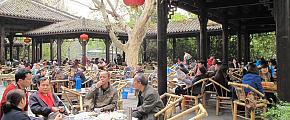All You Want to Know About the Giant Panda
When visiting China, many travelers expect to have close contact with the giant panda, one of the most adorable creatures in the world. Actually, no other country can provide such a wonderful chance as China, as the giant panda is native to China and thus serves as China's national symbol. Here I summarize much information you may want to know about the giant panda.
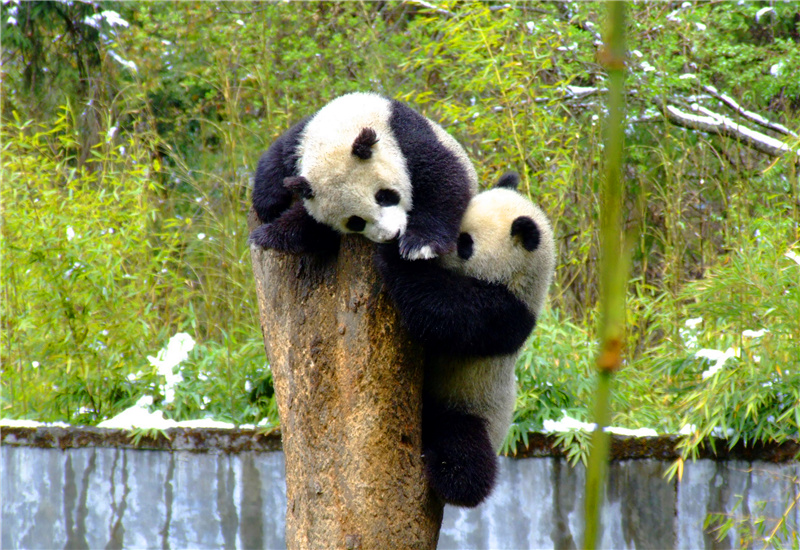 Two Pandas on a Tree in China
Two Pandas on a Tree in China
Chinese Name
Though the giant panda had 20 different Chinese names in the past, the most popular name in China today is dàxióngmāo (大熊猫 literally means "giant bear cat"), or simply xióngmāo (熊猫 "bear cat"), or dàmāoxióng (大猫熊 "giant cat bear") partly in Taiwan.
Habitat
The giant panda is native to south-central China and now lives mainly in the bamboo forests of the Qinling Mountains in Shaanxi Province and the hilly province of Sichuan.
Diet
The giant panda's diet is mainly herbivorous, consisting of over 99% bamboo. However, the giant panda is classified as a carnivoran in terms of taxonomy, and still has carnivore-specific genes and a digestive system, thus getting little energy and protein from bamboo. To compensate for the limited energy included in its diet, the giant panda eats as much as 9-14 kg (20 to 30 lb) bamboo shoots a day on average and thus defecates up to 40 times a day.
As a result, the giant panda has its behavior affected by the limited energy input and tends to limit energy expenditures by limiting social interactions and avoiding steeply sloping terrain.
The giant panda is a kind of animal with high and unique adaptability and has lived in bamboo forests for millions of years. It evolved a lower metabolic rate and a more sedentary lifestyle, which allows it to subsist on nutrient-poor resources such as bamboo. Its large size and round face (the result of powerful jaw muscles) are also adaptations to its bamboo diet.
Besides bamboo, the diet of the giant panda in the wild may also include occasionally grasses, wild tubers, or even meat in the form of birds, rodents, or carrion when available. In captivity, its diet is specially prepared and includes the combination of major bamboo with honey, eggs, fish, yams, shrub leaves, oranges, bananas, or specially formulated biscuits.
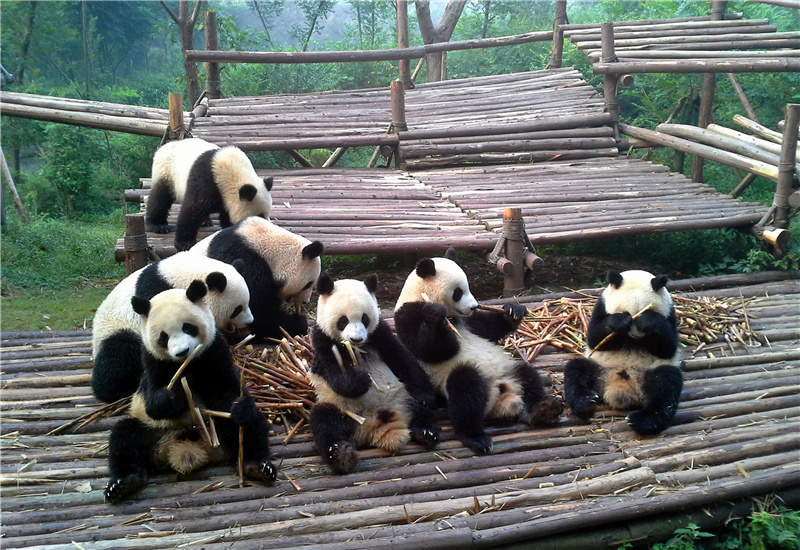 A Group of Giant Pandas Eating Bamboo
A Group of Giant Pandas Eating Bamboo
Lifespan
The giant panda typically lives around 15-20 years in the wild and above 30 years in captivity. The oldest giant panda ever in captivity is a female named Jia Jia, who was born in 1978 and died on 16 October 2016 at an age of 38. Considering one year for a giant panda is equivalent to three or four years for a human being in terms of aging, she was over 100 by the human standard.
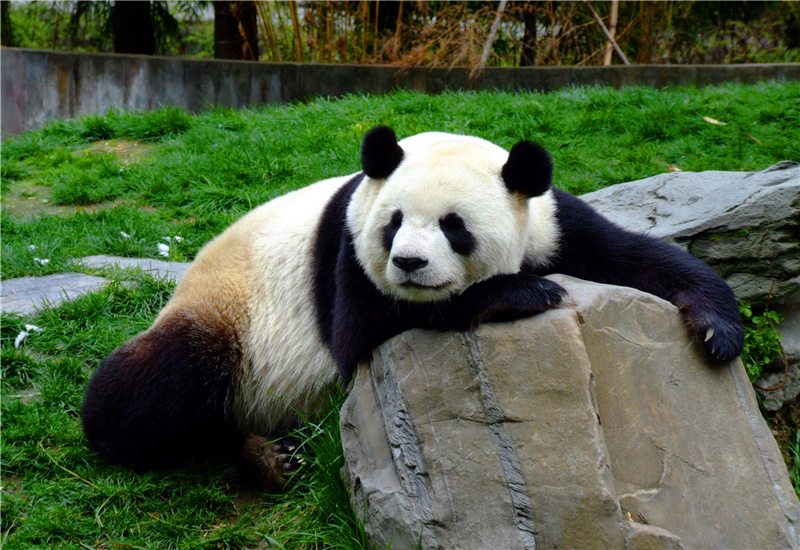 A Giant Panda Relaxing on a Rock
A Giant Panda Relaxing on a Rock
Classification
The giant panda shares many characteristics with both bears and raccoons, making its taxonomy under debate for many decades. However, molecular genetic studies show that the giant panda is a true bear and the most basal member of the family Ursidae. So it was referred to as a living fossil.
Reproduction
The normal reproductive rate of the giant panda in the wild is considered to be one young every two years. The twin birth rate is about 50%. Usually only one of the twins can survive in the wild, as the mother will select the stronger one, and the weaker one will die. It is thought that the mother is unable to produce enough milk for the twins as she does not store fat. The father leaves the mother alone after mating and takes no part in helping raise the cub.
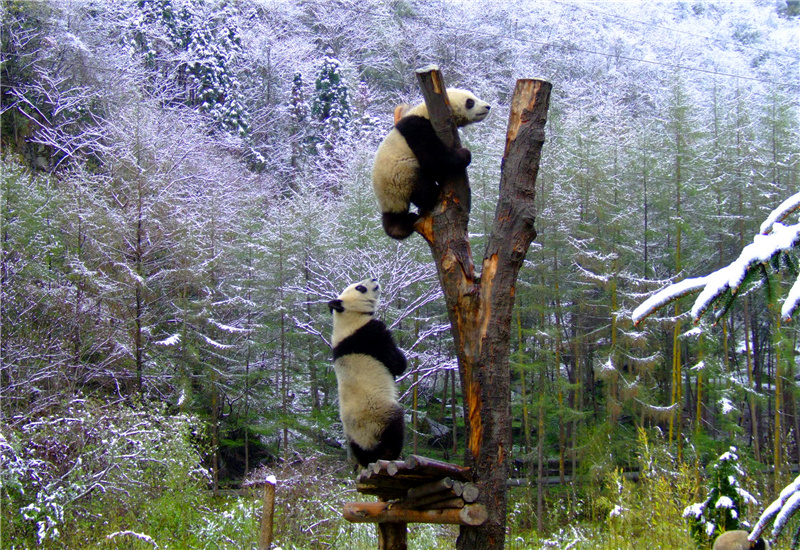 Two Giant Pandas Climbing the Tree
Two Giant Pandas Climbing the Tree
Growth Process
The giant panda cub is pink, blind, and toothless when born, weighing only 90-130 grams (3.2 to 4.6 ounces), which is about 1/800th of the mother's weight. Thus in proportion to its weight, the cub is the smallest baby of any placental mammal. The mother nurses the cub 6-14 times a day for about 30 minutes each time and may leave the unguarded cub for 3-4 hours to feed.
1-2 weeks after birth, its skin becomes gray and its hair becomes black. Its fur may be a slight pink which results from its chemical reaction with its mother's saliva.
A month after birth, its fur has a fully developed color pattern, and is very soft and coarsens with age. 75-80 days after birth, the cub begins to crawl, and the mother rolls and wrestles with it as their game. After 6 months, the cub can eat a small amount of bamboo, though its major food source is the mother's milk for the first year. The cub lives with the mother until it is 18-24 months. On average, a one-year-old cub weighs 45 kg (100 pounds), while the adult weighs 100-115 kg (220-254 lb). The adult has a distinctive black patch around each of its eyes, over the ears, and across its round body.
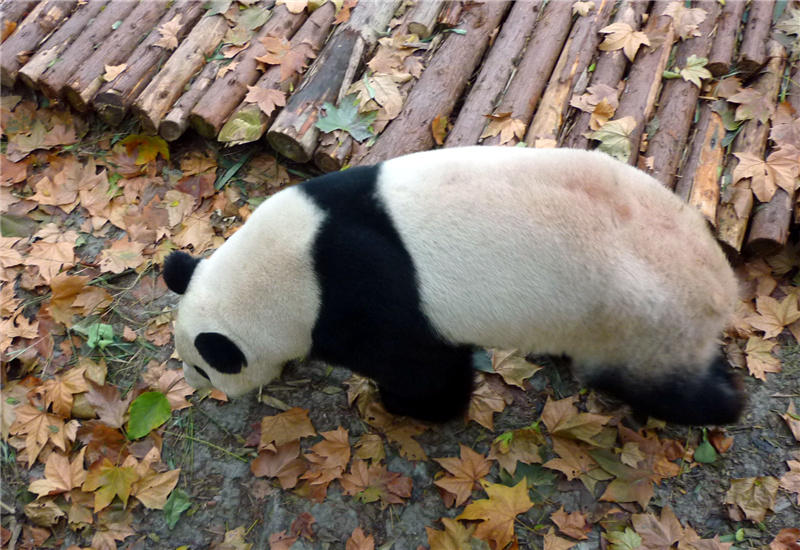 A Giant Panda With a Slight Pink Fur
A Giant Panda With a Slight Pink Fur
Panda Diplomacy
In the 1970s, giant pandas were given to American and Japanese Zoos as gifts, forming a significant part of China's diplomacy, and marking the first cultural exchanges between China and the West. This practice has been called "panda diplomacy".
By 1984, the practice has been changed. China began to offer giant pandas to other countries only on 10-year loans, with conditions including an annual fee of up to US$ 1 million and a provision that any cub born during the loan belongs to China. Since 1998, only a US zoo has been allowed by the United States Fish and Wildlife Service to import a giant panda on the condition that the zoo can ensure China will spend more than 50% of its loan fee on the conservation of the giant panda and its habitat, as a result of a World Wildlife Fund lawsuit.
Conservation
The giant panda is one of the world's most adored and protected rare animals and is one of the few in the world whose natural inhabitant status was able to gain a UNESCO World Heritage Site designation. With China's conservation efforts, the giant panda has been reclassified from "endangered" to "vulnerable" by the International Union for Conservation of Nature in 2016. According to the statistics in 2015, 1864 giant pandas live in the wild, and about 300 pandas live in zoos and conservation centers around the world.
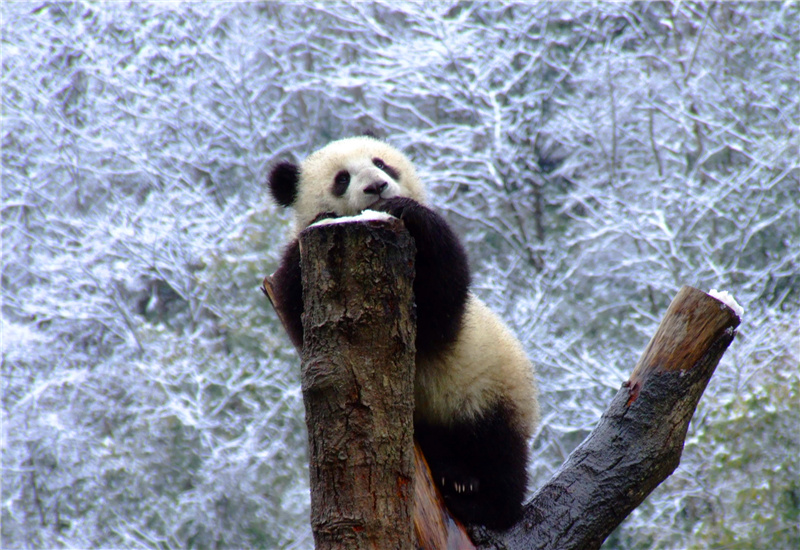 A Giant Panda on a Tree Top
A Giant Panda on a Tree Top
Chengdu Research Base of Giant Panda Breeding
Located just 10 km north of Chengdu, the base is set up to combine the mountain and forest regions with extensive bamboo forests and green spaces in the northern Sichuan Province, which is the original home of the Giant Panda. The base now holds over 80 giant pandas. Here, you may have the chance to hold a panda cub, feed pandas, and interact with them up close. Besides, you can watch them munching on bamboo, sleeping, playing with their family members, and climbing trees.
 Three Giant Pandas Playing With Each Other
Three Giant Pandas Playing With Each Other
The giant panda is so adored and attracts myriad attention all over the world. If you are also expecting a close interaction with this cute black-and-white creature, we are more than happy to tailor-make a private tour for you.
More Posts
What Our Clients Say
"Great Customized Service", "Trip of A Lifetime", "Exceed All Expectations"

